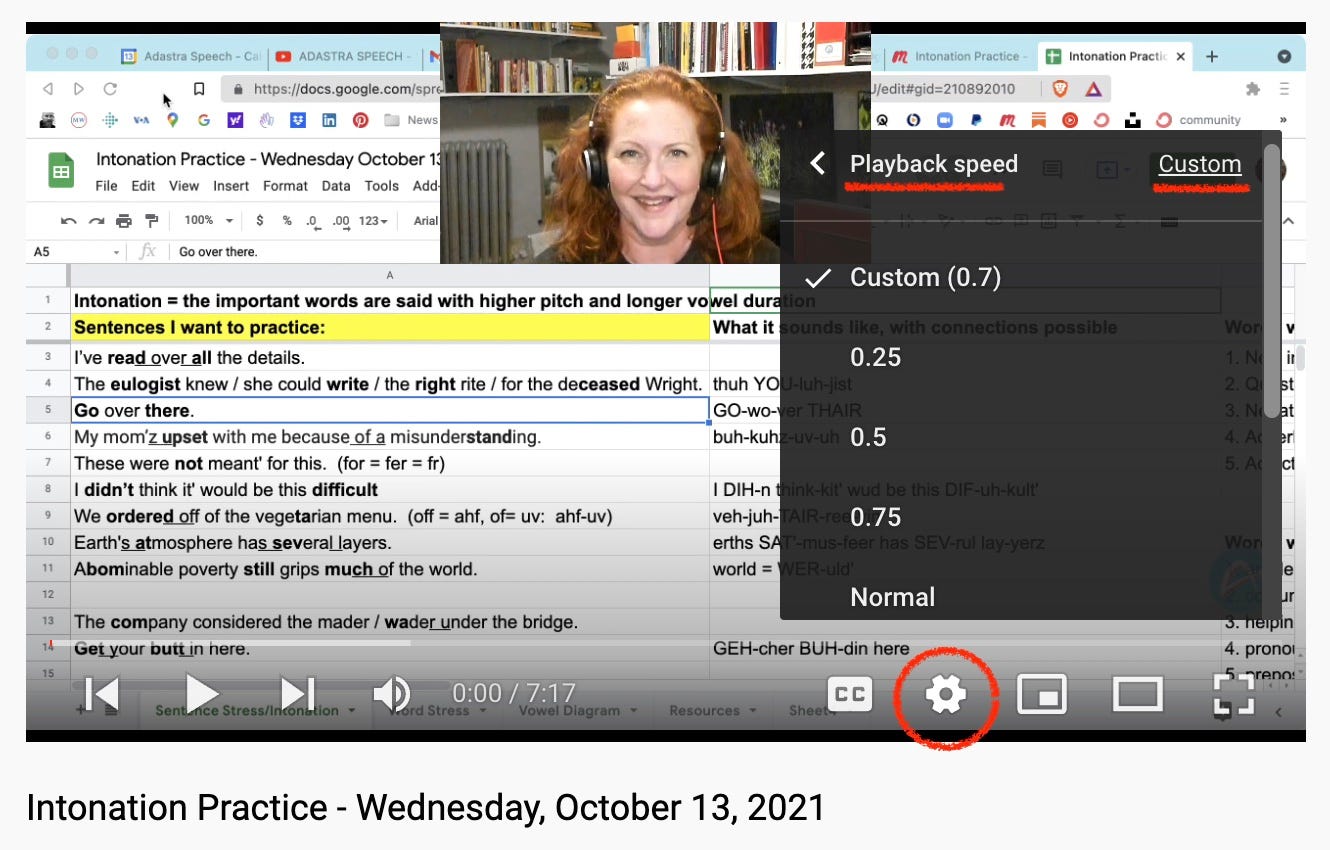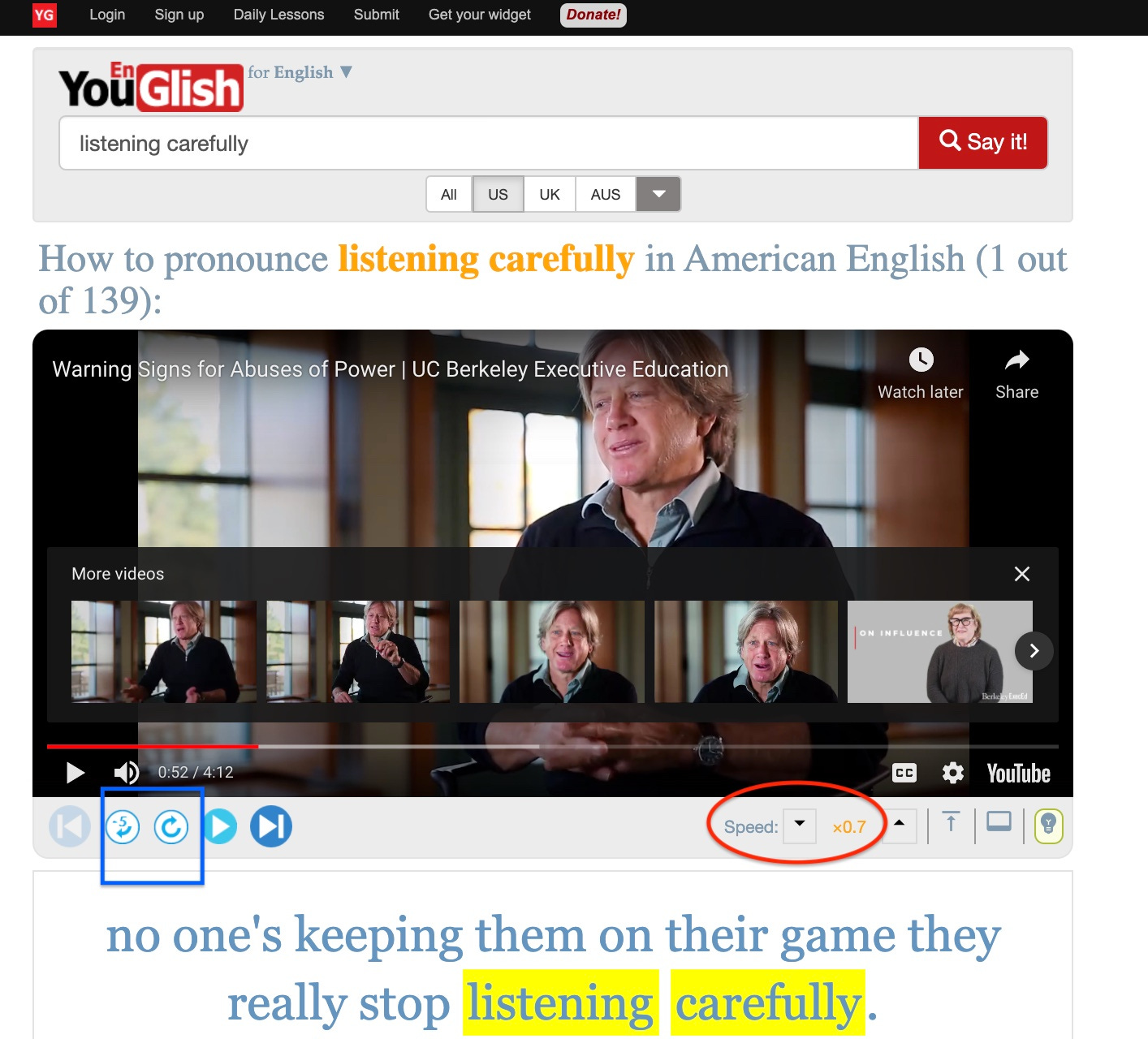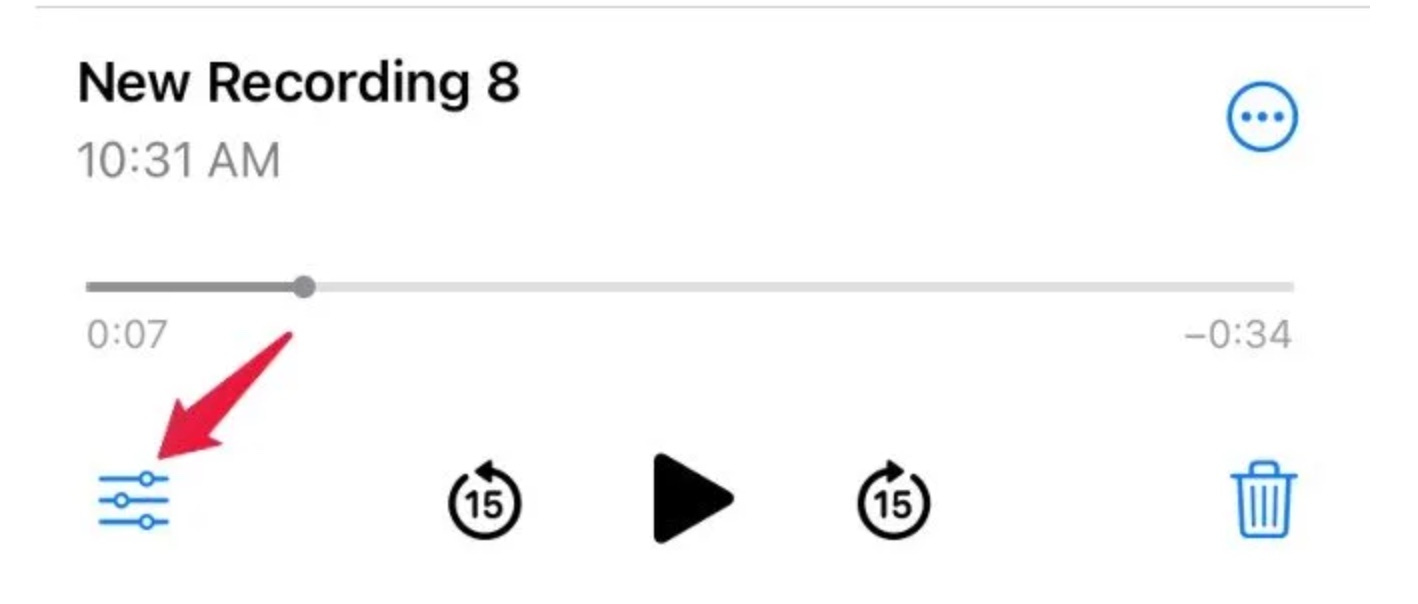Slow Playback

I’m often asked what tools I use when teaching. I always look for free websites, apps, and downloads that anyone I work with can access. They don’t have to be specifically made for learning English pronunciation or intonation and in fact, some of my favorite ones aren’t made for that at all but are the best for learning when you know what to listen for. You’re surrounded by speech all the time so why doesn’t it just soak in automatically? You have to know what to pay attention to. Awareness is the first step of encoding something into your memory. You can’t encode something that you can’t notice. Slowing down the speed to catch these small sounds in speech is one of the best ways to increase ease and speed of encoding something new into your memory.
I can tell you the rules about when vowels change their sound to the schwa “uh” sound, but until you are able to hear it, identify it, and find it meaningful in its use in a word and sentence, it’s not going to be something you just start using. The schwa is the most common sound in American English and it’s what provides the rhythm of the stress-based language. Unfortunately, it’s used in unstressed syllables that are shortened in duration so they go by by quickly and almost undetectable in regular conversation. One way to catch these short sounds is to slow down the speed of any recording you’re listening to.
Listen to Other People
YouTube - Most videos on YouTube have this option. Almost all videos on Ted.com have this option.
Choose the gear icon and then in the pop-up menu choose, “Playback Speed.” If .5 is unbearably slow to listen to, I find .7 to be a better compromise between normal speed and half speed than .75 speed. You’ll have to choose “custom” to adjust it.
Here’s a screenshot of where to find it:
I used my own video as an example so you can click and try it here:
YouGlish - The video player on YouGlish always has a speed control. If you haven’t played with YouGlish, you’re missing out on an amazing tool for listening to speech. I hope this encourages you to try it for the first time or remind you to use it again.
Screenshot is from this video.
The awesomeness of YouGlish is that you can enter any word or group of words that you’d like to hear people say. YouGlish comes up with YouTube videos that contain that word/words and highlights it in the captions as the video plays. I entered “listening carefully” and it found 139 videos that contain those words. You can keep clicking to forward on to the next video. Slowing down the speed is essential to catch the small details like vowels changing to schwa, contractions, connections, and sound changes that happen in connected speech. There’s a “-5” button on the left side so you can go back 5 seconds or return to where the video clip started. You’ll get a mix of people speaking in different situations and can compare how people sound when presenting more formally to speaking casually in a conversation.
Listen to Yourself
Practice analyzing your own speech by recording yourself in at least three different situations: 1) reading, 2) speaking by yourself, 3) speaking with other people. When speaking with other people, it’s illegal in some US states (MA, for one) to record other people without their consent so there are other ways to catch yourself speaking naturally in conversation. Speak on a phone or online chat and use headphones to hear the other person while you record your side of the conversation on your phone or computer. You only need your side anyway.
iPhone - The Voice Memo audio recorder that is in all iPhones has adjustable playback speed starting with iOS 15.
Android - There isn’t one single audio recorder common to all Android phones but there are many third-party apps you can download. When looking for an app, look for variable playback speed.
Listen to People All Around You
Once you know what to listen for and have practiced hearing it in slow-down recordings, apply that to listen to people all around you. It’s easier to do when you’re not participating in the conversation, but if you can, listen to not just what someone is saying, but exactly how they said it.






Brilliant and helpful as always!